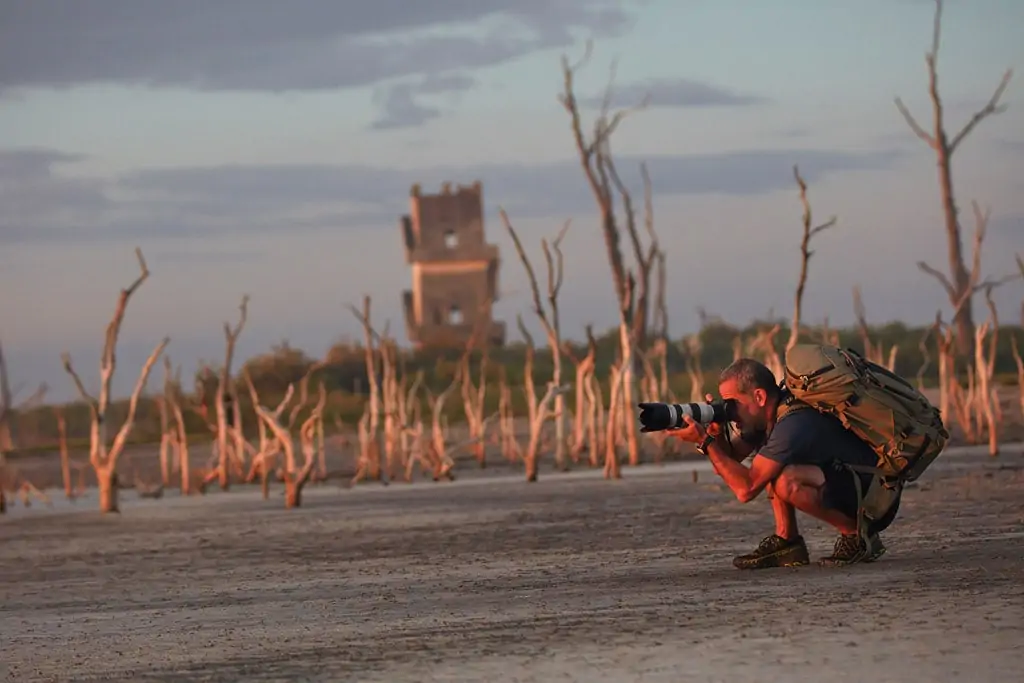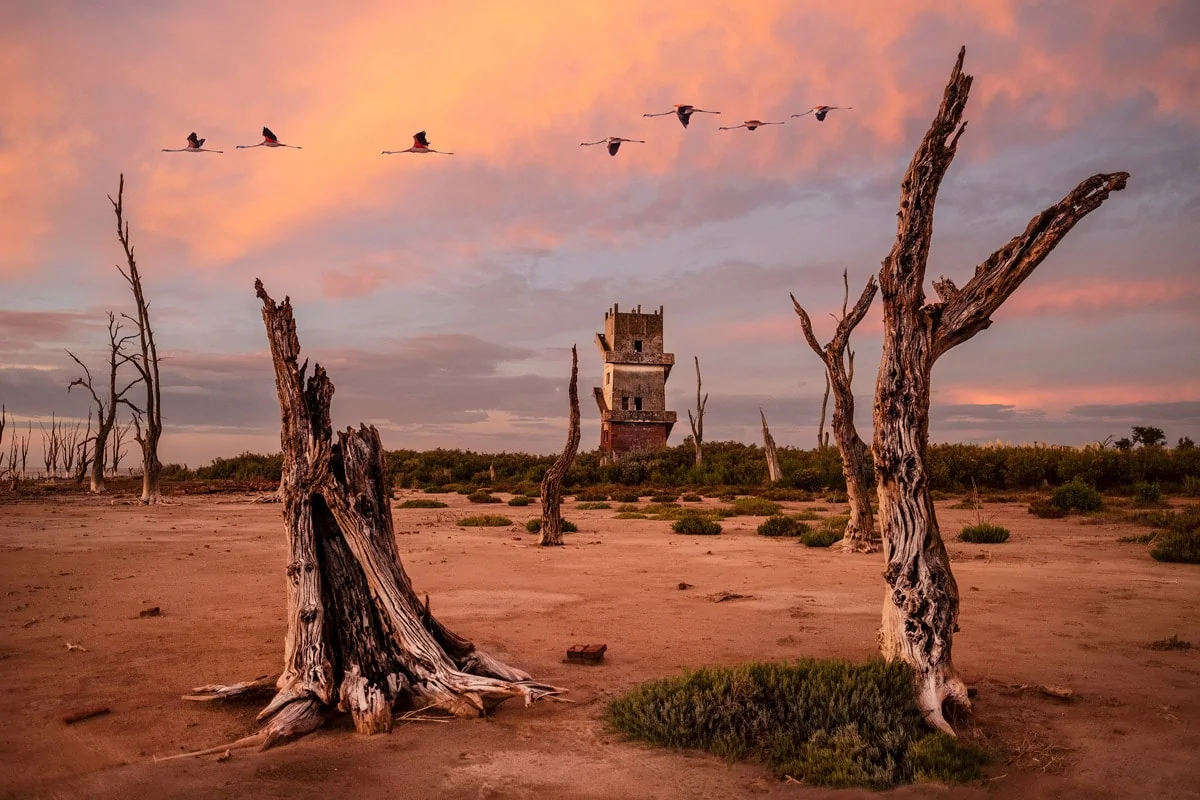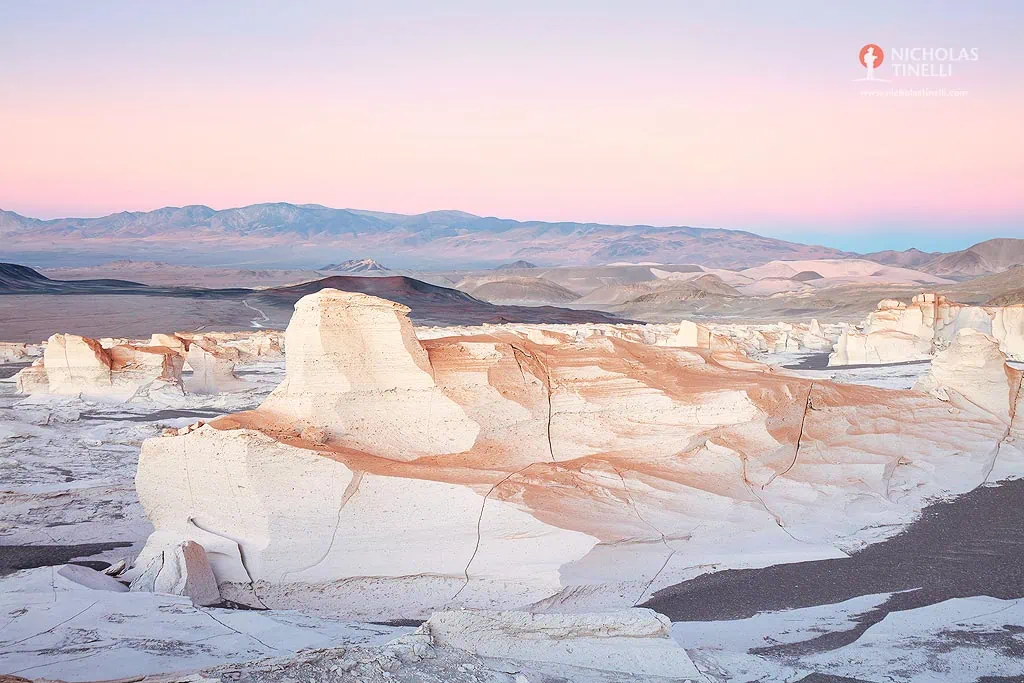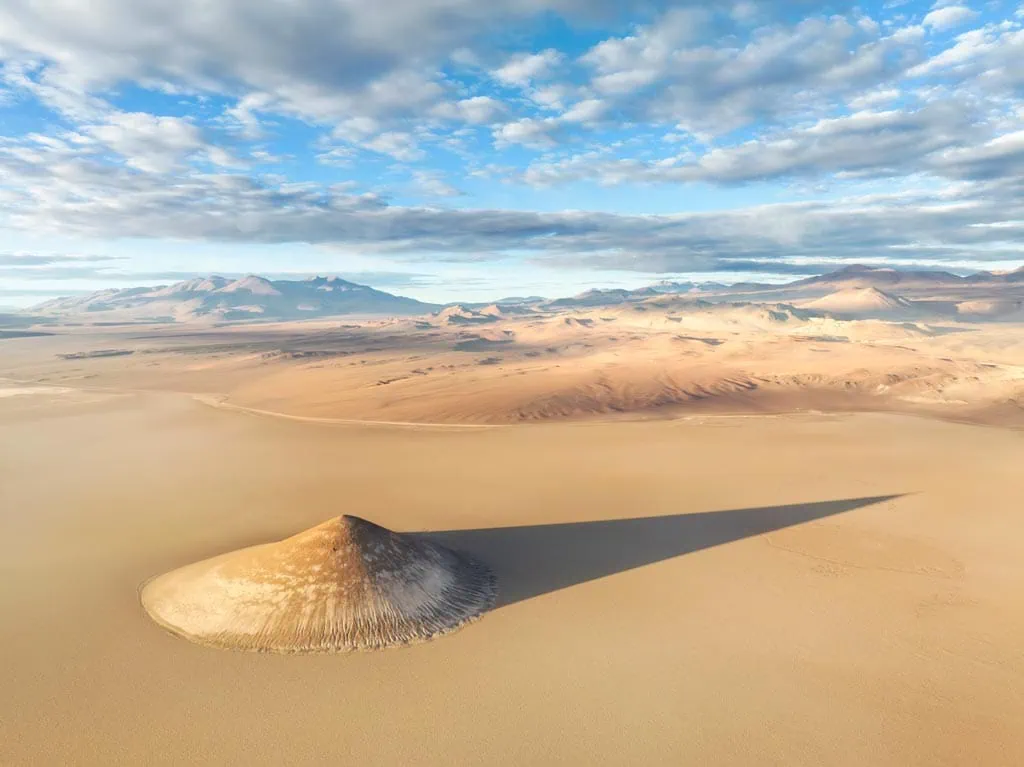The Mar Chiquita Lake is one of the largest saline wetlands in Argentina.
It is a real inland sea in the middle of the Córdoba plains, with an extension of 6.000 km2.
The vast wetland of Mar Chiquita is formed by two subsystems: the Mar Chiquita Lake to the south and the marshes of the Dulce River to the north. The marshlands include a large area of wetlands, grasslands and salt flats that extend into the valley of the Dulce River and at the end of its course, reaches the north of the lagoon.
Three rivers flow into the lagoon: Primero (or Suquía), Segundo (or Xanaes) and Dulce.
The area is surrounded by several villages, although only Miramar de Ansenuza is located on the shore of the lake.
The complex and diverse ecosystem that has developed, formed by abundant native flora and fauna, makes Mar Chiquita a destination of excellence, especially for flamingo sightseeing in Argentina.
Table of Contents
Where is the Mar Chiquita Lake?
The Mar Chiquita Lake is located in the northeast of the province of Córdoba, in north-central Argentina.
It is a protected area that, together with the marshes of the Dulce River, are part of a project in the Argentinean congress to declare the area a National Park.
They constitute a key site for the conservation of biodiversity worldwide and for the conservation of birds from the center of the country and migratory species from South America.
Why is the Mar Chiquita Lake salty?
The Mar Chiquita Lake is an endorheic lagoon, which means that it is an area where the water has no fluvial exit to the ocean.
For this reason, the rain that falls remains there and only leaves the system by infiltration or evaporation, which favors the concentration of salts.
The high salinity of the lagoon and its variable surface make it one of the largest salt lakes in the southern and western hemisphere.

Flora and Fauna of Mar Chiquita Lake
The complex ecosystem developed in this area includes abundant flora and fauna.
In terms of vegetation, it is very diverse. The transition from the Chaco vegetation to the Mar Chiquita depression starts with the typical Chaco forest, where we can find mainly white quebracho, mistol and carob trees. As soil salinity increases, the Chaco forest is progressively replaced by a shrub forest, lower and with more halophyte species.
The complexity of the landscape is critical for the habitat of diverse wildlife species.
We can mention the artemia, a small crustacean that lives in salty waters, the pejerrey that reaches very high levels in the lagoon and the otter or “coipo” (in Araucanian) that is still in a wild state in spite of its intense hunting.
There is also a great variety of amphibians and different types of toads: “salineros” (they bury themselves in the mud to resist the dry season), spotted, gardeners, common; and different kinds of frogs: “vizcacheras”, “chaqueñas”, striped, monkey, among others.
As well as reptiles: the species are distributed among lizards, snakes (large ones like the lampalagua that reaches up to 3.5 meters and small ones like blind vipers), turtles (terrestrial and aquatic) and amphisbaenids (apex reptiles, without legs, with subway habits and very difficult to see).
Last but not least: the aquatic birds. The total number of bird species reaches 142, of which 73 are permanent in the area and of the rest, a little more than 60% are migratory species while the rest appear occasionally.

We can find two species of South American swans, the black-necked swan, which is very common and nests throughout the area, and the coscoroba, which becomes very common and nests in the marshes of the Dulce River.
There are also plovers, shorebirds and teros, birds associated with aquatic environments where they obtain their food from mud. Plovers are characterized by long migrations. To face such long journeys, they require a lot of energy, so they are able to store fat up to double their weight before leaving. They have an amazing capacity for orientation, being able to return each year exactly to the place where they nested.
Flamingos are the most charismatic and spectacular birds of the lake. Mar Chiquita is home to three of the six species of flamingos in the world: the Austral flamingo, the Andean flamingo and the James Flamingo.
The Austral flamingo (also known as Chilean Flamingo) is the most abundant and is found during the whole year, and it also reproduces massively in Mar Chiquita. Usually, the reproductive cycle begins around September, when large concentrations of flamingos are observed and they perform a series of complicated courtships. The nests are built by the couple. Eggs are laid between November and December. The chicks begin to leave the nests towards the end of January and remain in the area without being able to fly until at least the end of April. Flamingos do not reproduce every year.
As for the other two flamingo species, they are winter visitors, when they descend from their breeding areas located in the high Andean lagoons of the Argentine, Bolivian and Peruvian Puna.

The Andean flamingo (also known as Parina Grande) is a regular winter visitor, which can concentrate in numbers exceeding several thousand.
The James Flamingo (also know as Parina Chica), on the other hand, appears in low numbers and more sporadically.
Why is it also called Ansenuza?
Ansenuza is the name given to the Mar Chiquita Lake by the native people of the area.
A legend tells that Ansenuza was the beautiful Indian goddess of water, who lived in her crystal palace of the sea. She was very beautiful but also cruel to those who entered her domain.
Only once was love born in her heart for a badly hurt warrior, whom she could not save. As she cried so much over the body of her lifeless beloved, her tears turned the waters of the lake salty.
Seeing this, the father of the gods decided to give a chance to the love that had been born in Ansenuza’s heart, bringing the young warrior back to life. Then lightning struck and illuminated his body, transforming him into an attractive and slender bird with pink plumes.
From that moment on, the flamingo lived in the salty waters of Ansenuza.
Miramar de Ansenuza is the only town on the coast of Mar Chiquita Lake, in the southern part.
What to do in Mar Chiquita Lake?
With a unique biodiversity, this water mirror is ideal for aquatic birds sightseeing, among which plovers, seagulls, swans and pink flamingos stand out. Mar Chiquita Lake offers interesting scenarios and great opportunities for wildlife photography lovers.

In summer and on hot days, we suggest you bathe in its waters and come out revived by its medicinal properties; do water sports or take a boat ride to the mouth of the Segundo River, where you can see the union of the colors of sweet water and the lagoon.
Hiking and biking are other activities that cannot be missed. On the way it is tempting to climb up to a wooden lookout to watch the birds fly. To admire and photograph the sunset in this place is a unique experience.
Beyond the lagoon, the cultural proposal includes different attractions:
- The Dante Marchetti Museum of Photography, to learn about the history of the town.
- The Aníbal Montes Museum of Natural Sciences, to learn about the geological origins of the lagoon.
- The Croatian Chapel of San Antonio, the first in the province of Córdoba.
- The Gran Hotel Viena, one of the most visited places due to its German past and some ghost legends.
As for the gastronomy, you have to know that the typical dish of the locality is the otter meat – in marinade, to the vinaigrette or to the wine – you have to dare to try it!
What is the weather in Mar Chiquita Lake?
The dry season in the area of the Mar Chiquita Lake and the marshes of the Dulce River is between May and September, with rainfall occurring in summer.
The average temperature reaches an average of 24 ºC (75,2 °F) in summer (January) and drops to around 7 ºC (44,6 °F) in winter (July). The frost period extends between May and September.
How to get to Mar Chiquita Lake?
The city of Miramar de Ansenuza is located about 197 kilometers from the city of Cordoba (north-central province of Argentina) approximately 2 hours and a half by car.
Another alternative to travel is by bus, there are several companies that make that journey, which takes about 4 hours and a half.








2 thoughts on “Mar Chiquita Lake: an oasis for flamingos in Argentina”
Hi, I’m Gonzalo and I’m working on a project about Mar Chiquita Lagoon with fifth graders at Obispo Esquiú School. I really appreciate the information on your website. It is really useful and helpful to work with. Warm regards. Gonzalo.
Hi Gonzalo, thanks for writing to us! I’m really glad to know that the article was helpful for your project. Good luck with it!! Nicholas